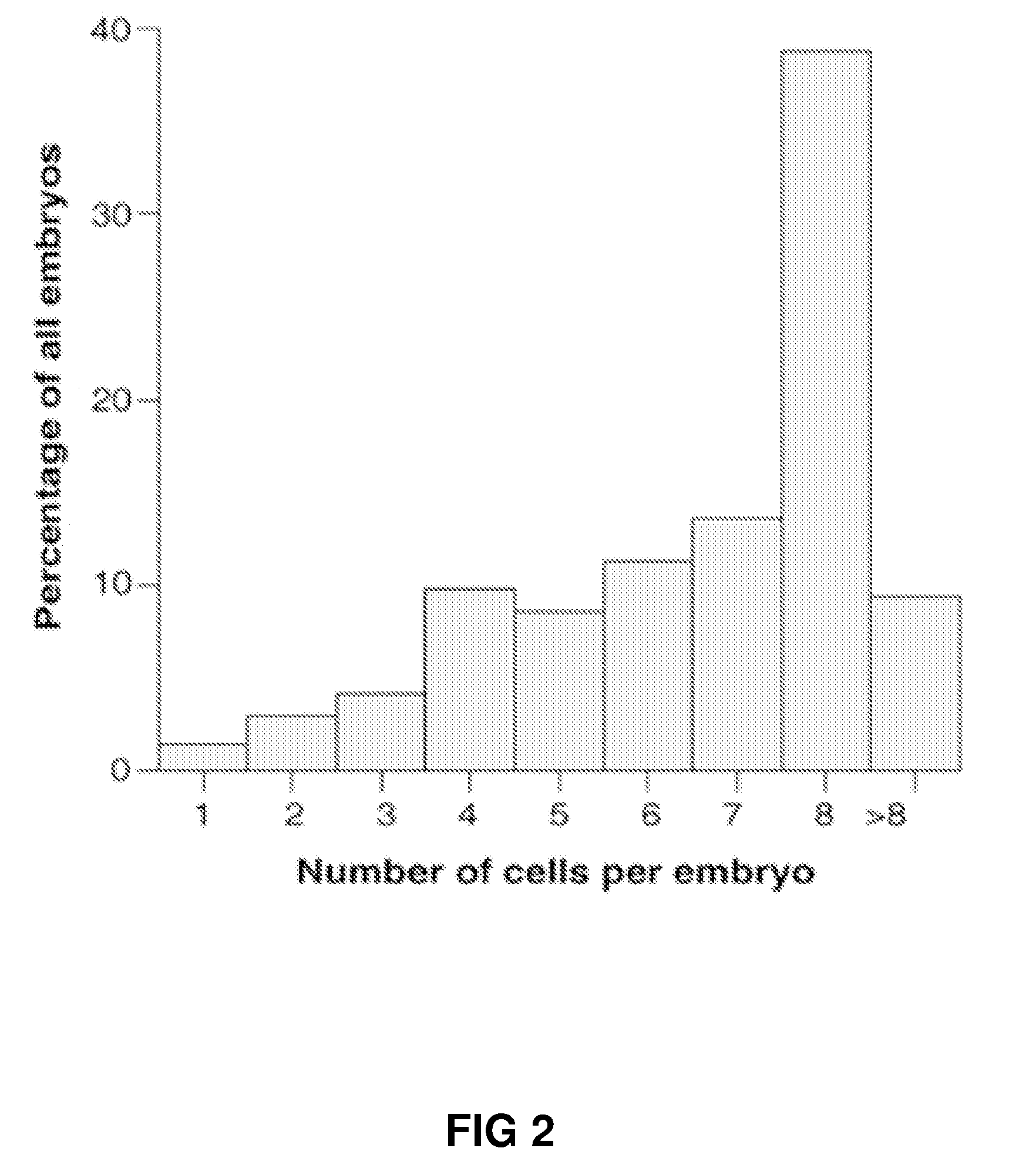Methods and systems for assessment of clinical infertility
- Summary
- Abstract
- Description
- Claims
- Application Information
AI Technical Summary
Benefits of technology
Problems solved by technology
Method used
Image
Examples
example 1
Clinical and Embryology Data
[0178]Of all 1117 IVF treatments performed at Stanford University in 2005, 822 were fresh IVF cycles that used the patients' own oocytes (FIG. 1, panel A). Based on our exclusion criteria, 157 cycles were excluded for a variety of medical and non-medical reasons.
[0179]The 157 cycles that were excluded consisted of: cancelled oocyte retrieval due to poor ovarian stimulation (63 cycles), cancelled embryo transfer due to complete lack of embryo development (8 cycles), cancelled embryo transfer due to unexpected medical or non-medical reasons (35 cycles), cycles that were not treated with gonadotropins (3 cycles), missing outcomes (8 cycles), and women being ≧45 years of age based on age alone (29 cycles). In our study, 160 patients underwent subsequent repeat cycles after a previously failed attempt for a total of 368 cycles. Of these, 126 patients had 2 IVF cycles performed, 25 patients had 3 cycles, 6 patients had 4 cycles, 1 patient had 5 cycles and 2 pat...
example 2
Prognostic Significance and Correlation of Variables
[0181]We systematically examined the association of each variable with IVF outcomes, and the correlation of each pair of variables. Pair-wise logistic regression tests confirmed many known prognostic variables, including female age, day 3 FSH, and the number of 8-cell embryos. However, in addition to these known prognostic variables, we observed that cohort-specific variables such as fertilization rate and the rate of cleavage arrest were also significantly associated with IVF cycle outcome (p<0.001; Table 3). In contrast, except for male factor infertility (p<0.05), none of the conventional clinical infertility diagnoses were significantly associated with IVF outcomes. Notably, despite a high degree of correlation between many variables and age or day 3 FSH level, which estimates ovarian aging, neither age nor day 3 FSH level was correlated to cohort-specific embryo parameters (Table 4). Collectively, these results suggest that de...
example 3
Analyses by Mart® and Cart Models
[0185]To overcome the challenges presented by the highly interactive nature and potentially non-linear dependence amongst variables, and their multicollinearity, all 30 variables listed in Table 5 and its legend were analyzed by MART® to generate models that utilize non-redundant prognostic variables. Eight models were generated by MART® with increasing complexity of individual trees for boosting, while the learning rate was chosen to produce a minimum test error for the given complexity. Among them, the 3 top-ranking models had cross-validated (CV) prediction error rates of 0.301 to 0.308, which separated them well from the other five models, whose CV error rates ranged from 0.315 to 0.331 (Table 5). The third model, however, was based on very complex individual trees yet showed a larger CV error than the two preceding models; thus it was excluded from the analysis. The resulting two top models, consistent with characteristics of meaningful regressi...
PUM
| Property | Measurement | Unit |
|---|---|---|
| Volume | aaaaa | aaaaa |
| Volume | aaaaa | aaaaa |
| Volume | aaaaa | aaaaa |
Abstract
Description
Claims
Application Information
 Login to View More
Login to View More - R&D
- Intellectual Property
- Life Sciences
- Materials
- Tech Scout
- Unparalleled Data Quality
- Higher Quality Content
- 60% Fewer Hallucinations
Browse by: Latest US Patents, China's latest patents, Technical Efficacy Thesaurus, Application Domain, Technology Topic, Popular Technical Reports.
© 2025 PatSnap. All rights reserved.Legal|Privacy policy|Modern Slavery Act Transparency Statement|Sitemap|About US| Contact US: help@patsnap.com



